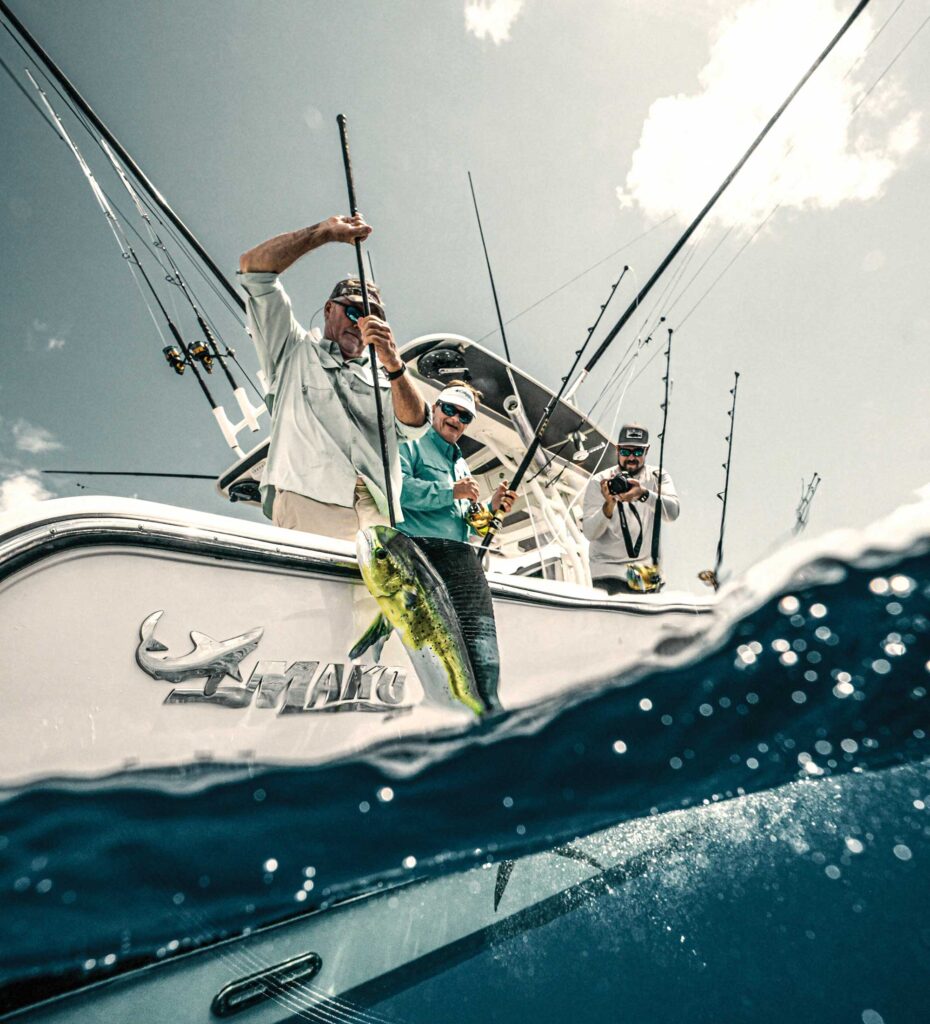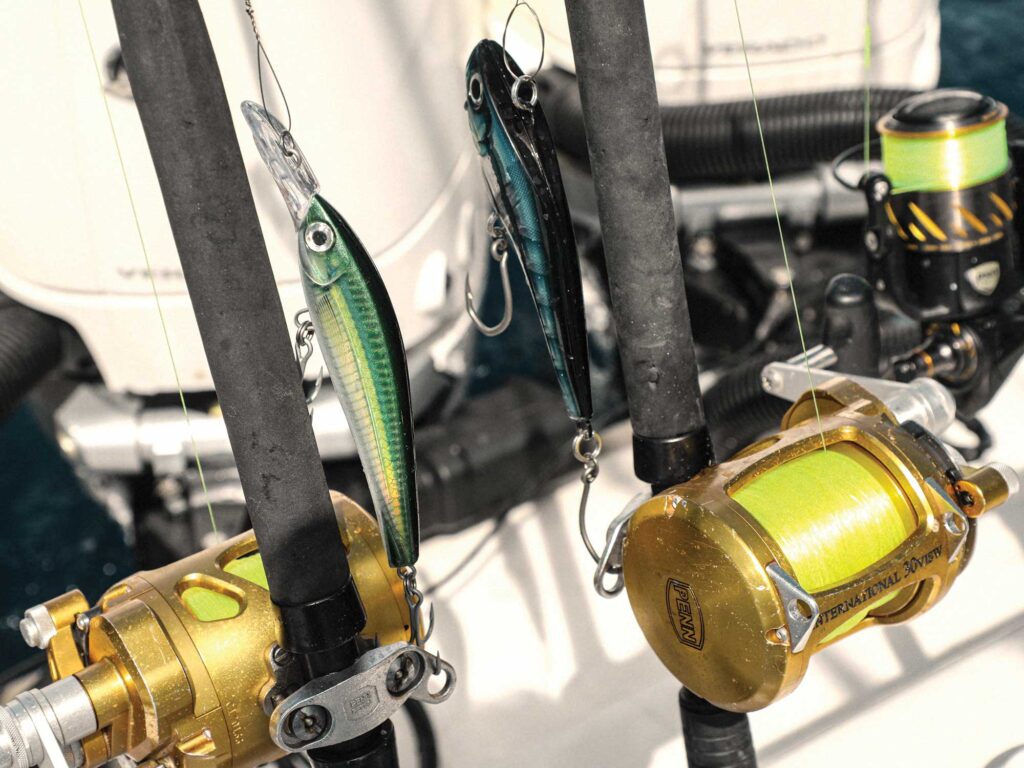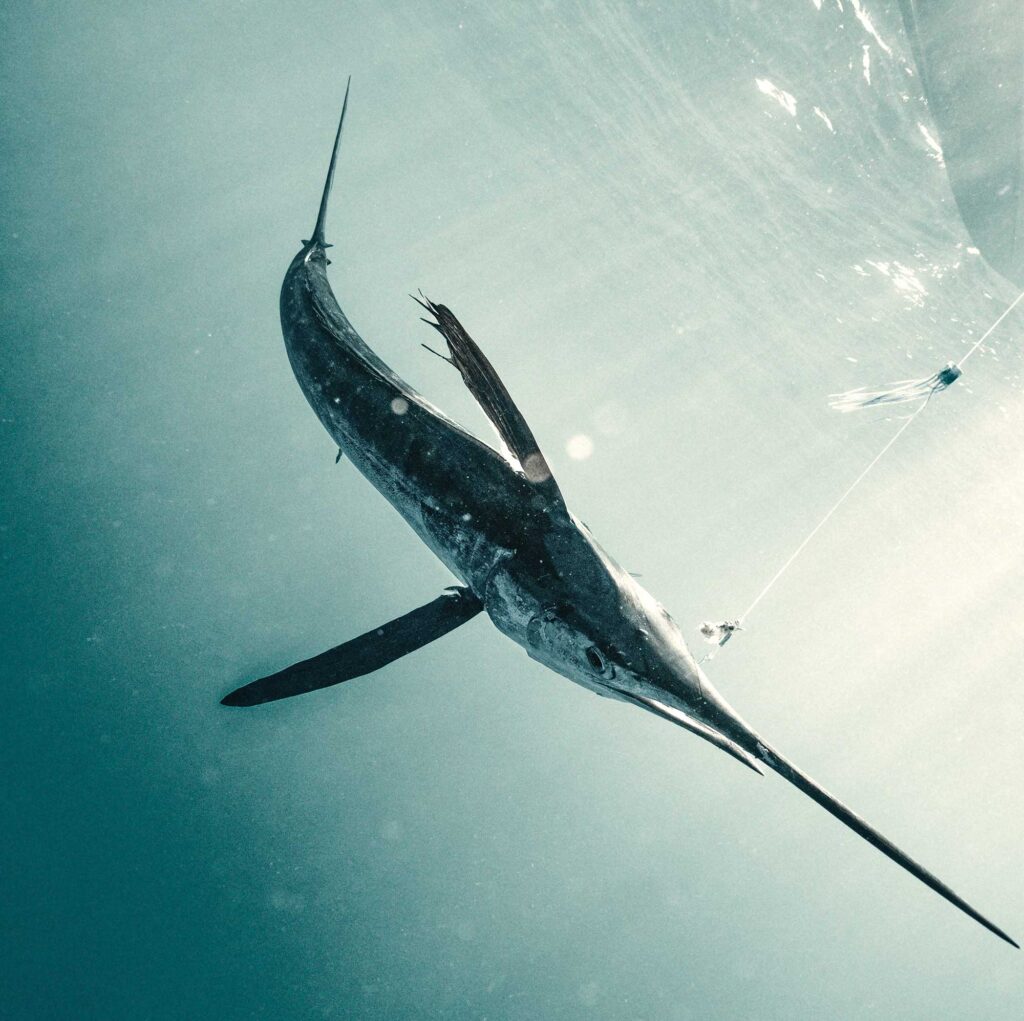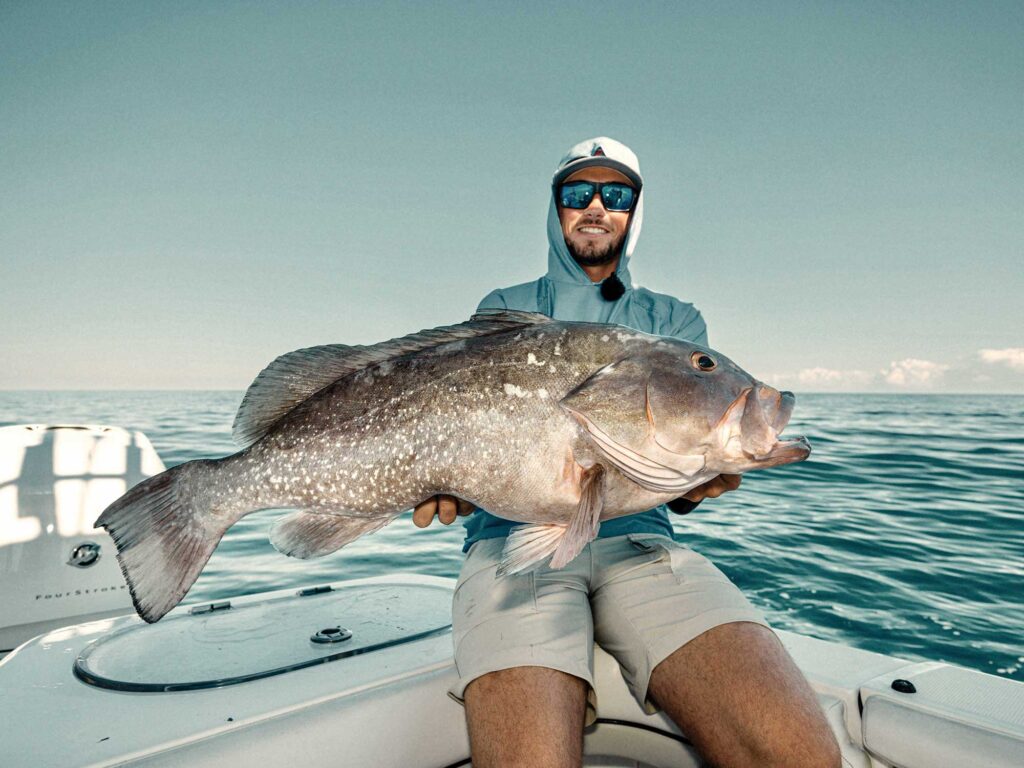SB Television
How to Prepare for Long-Range Fishing Expeditions
 When fishing far from home, safety is paramount. Treat the fishing as secondary, although a strong mahi bite is a bonus.
George Poveromo
When fishing far from home, safety is paramount. Treat the fishing as secondary, although a strong mahi bite is a bonus.
George Poveromo
Venturing to far-reaching destinations by boat provides a thrilling opportunity to catch more and probably larger gamefish in lightly pressured waters. And who doesn’t want that? It also presents the exhilarating challenge of pushing one’s vessel and seamanship to their limits.
I’ve been making long-range runs aboard my outboard-powered center-consoles for decades, whether an 80-mile run from Key West to the Dry Tortugas, 50- to 200-mile runs from South Florida to various spots in the Bahamas, or 60- to 100-mile runs to the tuna grounds and canyons in the mid-Atlantic and Northeast waters.
Here is a list of what I adhere to for safe and successful long-range expeditions. Ironically, the fishing aspect becomes secondary on these extended trips.
Safety ConsiderationsThe ocean is large and unforgiving. Even with the best plans, inclement weather can quickly materialize, often many miles offshore. Safety is paramount.
Within quick reach aboard Marc VI, my Mako 334 center-console, I have an ACR Global Fix V5 AIS emergency position-indicating radio beacon (EPIRB). If activated, a 406 MHz signal transmits the boat’s GPS coordinates to satellites, which, in turn, notify local search and rescue forces. The automatic identification system (AIS) feature simultaneously transmits an alert to local vessels equipped with AIS. (Commercial vessels are required to have it as part of maritime regs.) Between the 406 MHz and AIS broadcast signals, rescue times should be considerably shorter than in the recent past.
Inside my coffin box is a Viking Coastal six-person Valise life raft. In addition, the boat has two separate VHF systems, three bilge pumps, easy-to-reach fire extinguishers, two first-aid and flare kits, and a parachute anchor to keep the bow into the seas should we lose power. For emergency communication well outside cell range, I rely on a two-way satellite communicator to send and receive text messages, if necessary. Last, but certainly not least, I carry a few personal locator beacons (PLBs) with AIS alerts for crew, especially when traveling at night.
 Long-range trips require boaters to load up on tackle.
George Poveromo
Tiptop Shape
Long-range trips require boaters to load up on tackle.
George Poveromo
Tiptop Shape
I’m amazed over what some boaters define as “top mechanical shape.” Prior to any long-range run, I have my outboards serviced, fuel filters checked, and all vital connections double-checked for tightness and any corrosion. I’ll then shake down the boat for a day, making certain no issues arise after servicing.
Backup components include jumper cables, fuel filters, power-steering fluid, tie-wraps in various sizes, and fuel treatments. I’ll add Star Tron when in remote regions, where fuel quality might be suspect. If there’s room, take at least one spare prop and assembly.
Monitor Your FuelKnowing your tank’s usable gallons and gallons-per-hour burns at various rpm is crucial when pushing the mileage boundaries of your boat. For example, my 33-footer has a 308-gallon fuel tank. To be safe, I calculate all long runs on 277 gallons (90 percent) as being usable, though there’s likely more. I’ll dial in my console monitor to display fuel consumption when running. With triple 400 hp Mercury Verado V-10 outboards, a fully loaded boat and a full tank of fuel, the burn is around 1 mpg at around 4,000 to 4,500 rpm and 45 mph. This can vary depending on sea conditions.
The vessel gets lighter as fuel is burned off. This, in turn, results in better fuel economy. Given the above scenario, and with around 80 to 100 gallons remaining, we’ll see around 1.5 mpg at around 4,500 rpm and speeds around 47 to 48 mph. Again, sea conditions will influence fuel burn.
On our Bahamas runs, for example, closely monitoring fuel burns and doing the math determines if we have enough to reach our destination or if a pit stop will be required at a closer island along the route.
The same strategy determines if one’s vessel has the range to run far offshore, fish most of the day, and return to the dock—be it Northeast canyons, Gulf of Mexico canyons, or offshore oil rigs and bottomfishing structures. Always remember: Rough seas will result in a greater fuel burn, so never cut it close.
 Anglers should be ready for a mix of species such as white marlin.
George Poveromo
Forecast the Weather
Anglers should be ready for a mix of species such as white marlin.
George Poveromo
Forecast the Weather
Immediate and extended weather forecasts should govern the planning of a journey. Even then, weather and unanticipated winds from local storms can arise. Always know the weather projected days out to avoid getting caught offshore or stuck for another day or two at an island destination.
A royal flush is what we refer to as having perfect weather over the entire trip. However, on multiday outings, the piper often gets paid (via inclement weather) on at least one leg, be it the crossing over, one or two days at the destination, or during the run back home. Weather forecasters do miss a good bit. Consult NOAA marine forecasts and local weather stations. SiriusXM Marine Weather is good for showing wind direction and velocities, as well as precipitation and thunderstorms.
My radar’s weather mode continues to prove valuable in monitoring faraway cells and their movements, as well as the lighter areas when punching through a rain squall becomes necessary.
Time to FishWith safety, fuel capacity, range and engine dependability accounted for, it’s time to focus on the target species. Be prepared for just about anything. Bring as many outfits as the boat can accommodate, as well as ample terminal gear including leaders, plenty of hook styles and sizes, trolling lures and natural baits.
In the Bahamas, our boat becomes a floating tackle center. On board you will find artificial and natural trolling baits, live baits and even chum. Packed away are offshore teasers and daisy chains. In addition to trolling outfits, we’re ready with several spinners rigged for pitch-baiting. I am prepped for anything, from busting tuna and mahi under birds to bottomfish, cobia and permit. Don’t regret leaving something at home.
Read Next: Staff Picks: Best Fishing Expeditions
 Be prepared to switch from a primary quest to a backup. For example, trolling for tuna might turn into red grouper fishing.
George Poveromo
Backup Plans
Be prepared to switch from a primary quest to a backup. For example, trolling for tuna might turn into red grouper fishing.
George Poveromo
Backup Plans
Long-range success is often the result of being able to switch from a primary quest to a backup one—hence the tackle overload. The latest example of this occurred for us last spring at Blue Marlin Cove in West End, Bahamas. Our goal was to live-bait for yellowfin tuna in Northwest Providence Channel. However, after losing six tuna to sharks and a stiffening afternoon breeze, we opted to troll out front of the resort the following day. Yet winds kept building and cut that day short.
Faced with a 25-knot easterly breeze on our third and final day, we drifted over the reefs close to and in the lee of the island. Fortunately, we had all the bottom outfits, terminal gear and baits to catch plenty of muttons, yellowtails and grouper.
Ultimately, having a solid Plan B—and Plan C—and the gear to support these alternatives made the trip a success.
The Broom CrewLong-range fishing excursions are labor-intensive, given the preparation of the boat, tackle and bait. Don’t forget the fish cleaning and packing. Therefore, don’t be so quick to release your buddies upon the return home. Of course, there’s offloading and washing all the tackle. But also be sure to provide the soft and hard brushes, mitts, sponges and boat cleaner.
The post How to Prepare for Long-Range Fishing Expeditions appeared first on Salt Water Sportsman.
- Home
- About Us
- Write For Us / Submit Content
- Advertising And Affiliates
- Feeds And Syndication
- Contact Us
- Login
- Privacy
All Rights Reserved. Copyright , Central Coast Communications, Inc.